Timings indicate no use of explosives to blow the dam:
- The reported seismic event said to indicate a large explosion occurred at 2:54am local time, but footage revealed the dam had already been breached by 2.46am. This indicates that the seismic signal was most probably produced by the further collapse of the dam structures – like the Hydroelectric Power Plant (HPP) building giving way – rather than the use of explosives.
- An earlier weak signal at 2.35am subsequently reported by NORSAR, is then likely to be the first breaching event. NORSAR later removed text from the web page.
The facility had been hit repeatedly by Ukraining shelling:
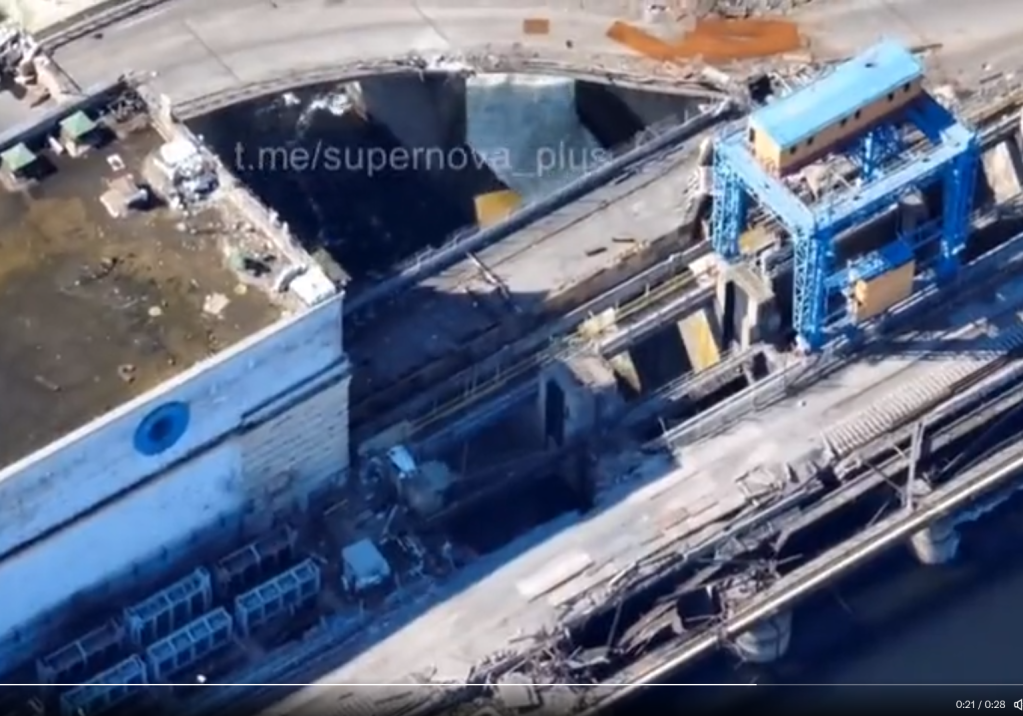
- The dam was on the frontline, with Russian forces present. Ukrainian shelling of the roadway caused marked damage to the dam close to the HPP.
Supporting columns for a road section over the barrage had collapsed five days earlier:

- Two thick concrete columns – supporting a previously shelled section of roadway close to the HPP – collapsed and were washed away between 1-2 June, according to satellite photos from the dates. Those supports formed part of the spillways for sluice gates 2,3,4, close to the HPP. The initial breach occurred on that side of the central barrage section.
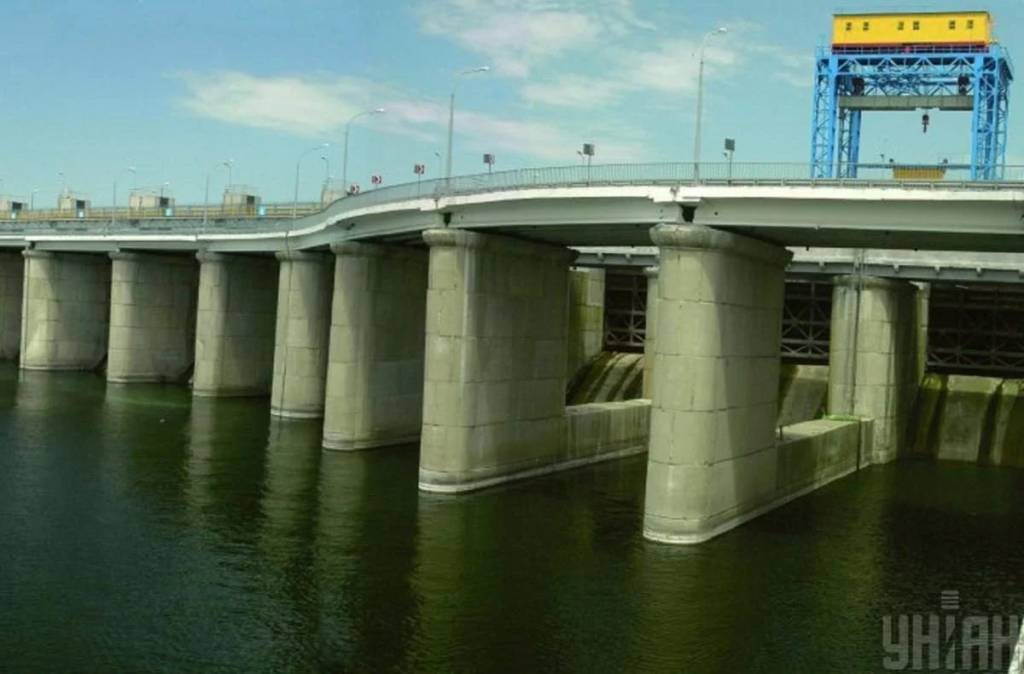
Two sluice gates were damaged months earlier:
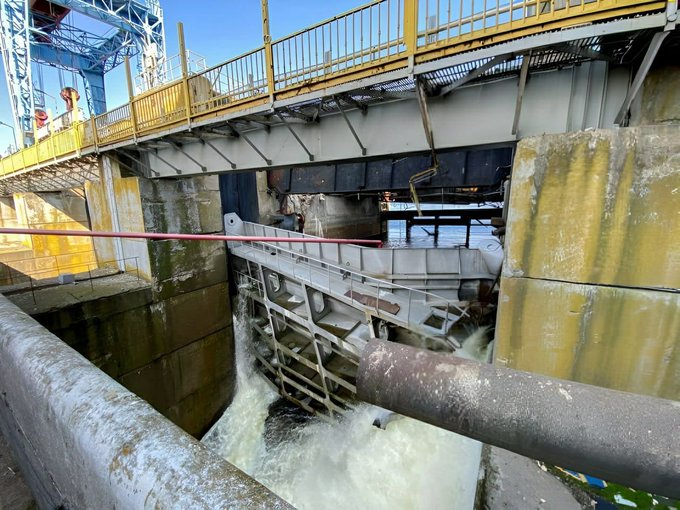
- Sluice gate 1, closest to the HPP had sustained significant damage from Ukrainian shelling months earlier. Resulting in more turbulent flows from that section.
- The damage likely dates from November 6, 2022 when a HIMARS strike was reported.
- This would match with later comments in the Washington Post: ”The Ukrainians… even conducted a test strike with a HIMARS launcher on one of the floodgates at the Nova Kakhovka dam, making three holes in the metal to see if the Dnieper’s water could be raised enough to stymie Russian crossings but not flood nearby villages. The test was a success…” – said Ukrainian Maj. Gen. Andriy Kovalchuk.
- “The threat from Ukrainian forces including snipers was reported, by the local Mayor in March, 2023 as preventing repair and maintenance operations.
- Update July 2023: Photos of prior damage to sluice gate 3 have also emerged
Canal blocked up:
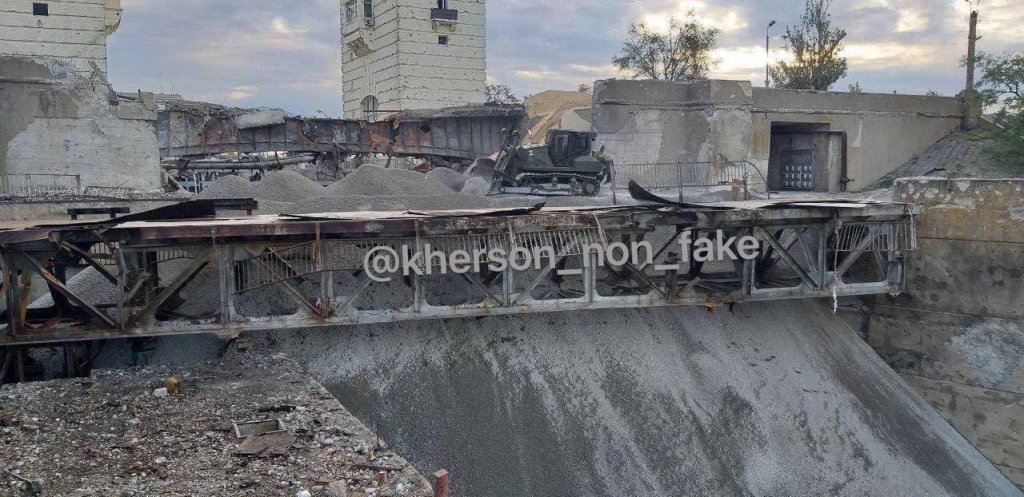
- The lock canal was filled-in during September ’22 by the Russians to build a new road crossing, after Ukrainian HIMARS strike had destroyed the road bridge. This would then prevent the canal being used as a slipflow around the dam in the event of high water levels.
Unusually high water levels in the reservoir:
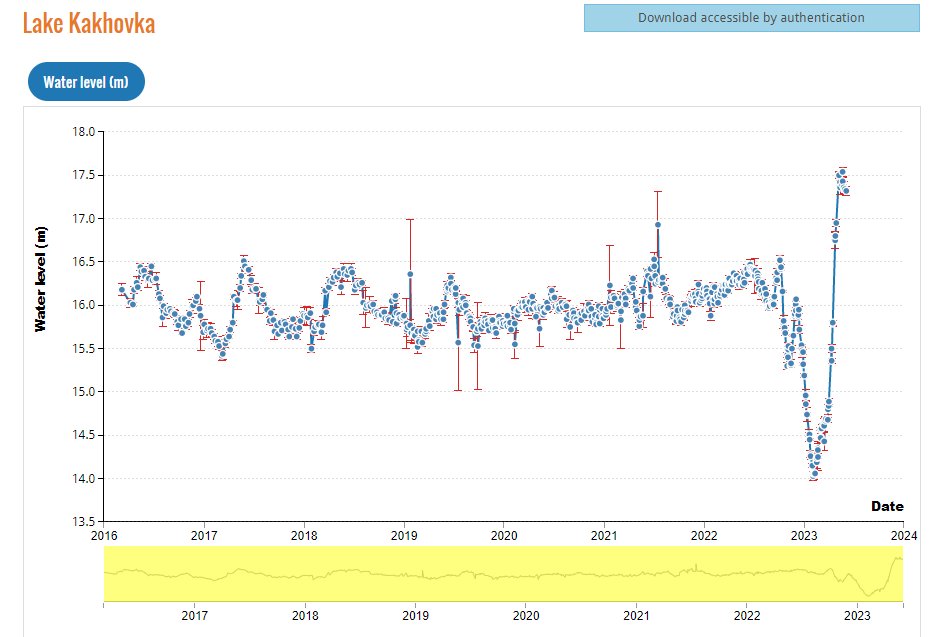
- The high levels appear to be due to heavy rain and some amount of excess discharge from the Ukrainian controlled dams upstream the Dnieper. The Kakhovka dam did still release a lot of water downstream in the weeks prior, although this was only through a few gates close to the HPP. Normal rotations and maintenance could not be carried out.
The above presents a few key takeaways from analysing the sources I collated on the ACLOS page for the Kakhovka Dam Collapse. You can find a more detailed treatment, with references and source attributions for the above there.
I particularly recommend Adam Larson’s analysis, and also this early technical overview from Mike Mihajlovic.
Update: Why did those columns collapse?
Adam Larson surmises that the concrete ‘apron’ underlying the spillways had sustained damaged from HIMARS strikes landing underwater. The high water level in the reservoir and its release through just a few (damaged) gates, generated intense flows – which would be sucked into and around any cavities and damage of this concrete shelf.
Scouring erosion of this base, underlying the thick columns supporting the roadway, then most likely accounts for their collapse. With an integral part of the structure washed away, the further main collapse event was pretty much inevitable.

